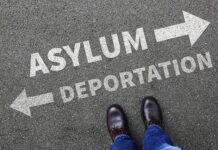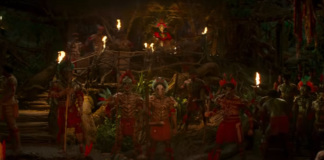The first Pride Month took place in 1970 in the U.S., with marches and “gay ins” in New York, Chicago, and other cities commemorating the first anniversary of the Stonewall riots, a watershed moment for queer rights. Fifty years later, amid a pandemic, there’s something else historic to celebrate: On June 15, the Supreme Court handed down a landmark decision that federal law prohibits employment discrimination against LGBTQ workers.
National Geographic has covered issues related to gender, identity, and inclusion for years. The magazine’s Gender Revolution feature
includes a useful glossary of gender terminology and concepts. Another story honors a dozen LGBTQ heroes—activists, artists, doctors, and writers—who had a lasting impact on communities around the globe. And travel features include this story on the 10 best destinations for LGBTQ families.
Due to COVID-19 restrictions, rainbow-hued parties and parades may be on hold, but virtual Pride celebrations will still unite the community in spirit—and stories. These 10 travel books by LGBTQ writers—the latest installment in our ongoing Around the World in Books series—share both what unites us and what makes us unique, whether on an American heartland road trip or a bus journey to the tip of the world.
Giovanni’s Room, James Baldwin, 1956. Set in mid 20th-century France, this groundbreaking novel incorporates themes of sexual orientation, race, and place. David, a young American engaged to a girl, falls in love with an Italian bartender but cannot imagine a life with him. Their affair seems limited to the bleakness of the eponymous room. Struggling with the concept and construct of “masculinity,” David suffers both heartbreak and the pain of hurting people he cares for. When the book was first published, Baldwin, an African-American man, was criticized for writing about white characters and homosexuals, but his work brought obscured realities to light, making it a widely read classic.
Real Queer America: LGBT Stories from Red States, Samantha Allen, 2019. After growing up Mormon and being raised as a boy, Allen was “reborn in a car.” During college in Provo, Utah, she’d sneak away from the male dorm, drive her father’s Honda to hidden parking lots and change into feminine clothing—and her true self. “That’s how I started on the messy process of becoming Samantha…and fell in love with the road,” she writes. In this picaresque memoir, Allen returns to her college campus and tours the “flyover” states and the deep South, determined to do “something gay every day.” Braking for political rallies, nightclubs, and all things LGBTQ, she finds queer culture flourishing.
(Related: Seeking gay travel sites? Check out these monuments around the globe.)
The Ice Cave: A Woman’s Adventures from the Mojave to the Antarctic, Lucy Jane Bledsoe, 2006. At age three, little Lucy Bledsoe wandered off from a family outing and crawled into a hidden ice cave. “I remember feeling utterly content…This is my earliest memory of finding a spiritual habitat in the wilderness,” she writes. In subsequent decades, Bledsoe was most at home alone in nature. But after a harrowing snow-camping experience in the High Sierras, the prolific lesbian writer lost her confidence and embarked on a personal investigation into her “relationship with wilderness.”
Trans New York: An Extraordinary Visual Essay on Love, Courage and Finding Oneself, Peter Bussian, 2020. Not all travel is geographic: the “transitions” between gender identities reflect complex itineraries of the heart. “After all,” writes Abby Chava Stein in the forward to this collection of portraits and interviews, “leaving the Hasidic community and transitioning is in every way like immigrating to a new country…There’s a new language, radically new culture, new food, new brands, and new clothes.” Bussian’s unpredictable portraits feature New Yorkers in iconic settings such as Washington Square and Grand Central Station, and often include modes of transit—subways, trains, cars—that define city life.
The Black Penguin, Andrew Evans, 2017. Fulfilling a lifelong dream to get to that “rarest corner of the globe,” Evans undertakes an epic 10,000-plus-mile, 65-day journey from National Geographic headquarters in Washington, D.C., to Antarctica—mostly by bus. Interwoven with this adventure is the personal journey he undertakes as he comes out to his Mormon family and fights for marriage equality. His video of a rare black penguin on South Georgia Island goes viral—and, for Evans, becomes a symbol celebrating difference.
Less, Andrew Sean Greer, 2017. In this Pulitzer Prize-winning novel, a hapless failed novelist receives a wedding invitation from his (much younger) ex-boyfriend. Arthur Less packs one stunning blue suit (with fuschia lining!) and runs away, stumbling through misadventures from Mexico to India, Germany to Japan. Along the way, he loses his health and his wedding ring, but gets a grip on his own heart.
(Related: Want to learn more about Stonewall? Check out this visual history.)
Leche, R. Zamora Linmark, 2011. Returning to visit the Philippines after more than a decade living in Hawaii, Vince is a witty, restless soul searching for the meaning of home. His adventures include an appearance on a celebrity talk show, a foray to an infamous gay club, and dodging awkward questions about his marital status from prying relatives. The narrative is interspersed with tourist tips (“Never turn down Filipinos who invite you to dine with them.”) and postcards. Ultimately this novel is a love letter to loud, contradictory, chaotic Manila and to Filipinos working and living throughout the world, “scattered like the stars.”
Conundrum, Jan Morris, 1974. Morris’s memoir was published the same year that homosexuality was declassified as a mental illness in the DSM (Diagnostic and Statistical Manual of Mental Disorders). But Morris, a successful British travel writer, was ahead of her time in realizing she was not homosexual but “transsexual.” In her pioneering account of gender transition, she recalls being “James” and attending Cathedral Choir School in Oxford and singing in Christ Church Cathedral. “An ancient holy building is conducive to secrets, and my secret became so intermingled with the shapes, sounds, and patterns of the cathedral that, to this day, when I go back there to evensong, I feel an air of complicity,” she writes. Morris’s deep musings—revolutionary and radical in her day—have given heart and hope to generations of trans people.
The Blind Masseuse: A Traveler’s Memoir from Costa Rica to Cambodia, Alden Jones, 2013. Young and bi, earnest and enthusiastic, Jones goes adventuring, aware of her privilege and of America’s less-than-salubrious influence on many parts of the world. She wonders if there’s a right or wrong way to travel: “Some people have the devil on one shoulder, nudging their id, and the angel on the other, appealing to their superego. I had the tourist and traveler, two entities that were, in my mind, just as polarized.”
Thru-Hiking Will Break Your Heart: An Adventure on the Pacific Crest Trail, Carrot Quinn, 2015. Raised in Alaska by a schizophrenic mother, Quinn was no stranger to challenging circumstances or physical hardship. But as a queer young adult, she finds herself immersed in social media but devoid of intimacy. Lonely and desperate to feel something, she sets off on the 2,660-mile-long Pacific Crest Trail, from Mexico to Canada. She chronicles deserts and downpours, blisters and barbecues, the Milky Way and mosquitoes. If Cheryl Strayed’s Wild trek was about self-discovery, Quinn’s was a journey of connection—as the other hikers she meets along the way ultimately become her “trail family.”






